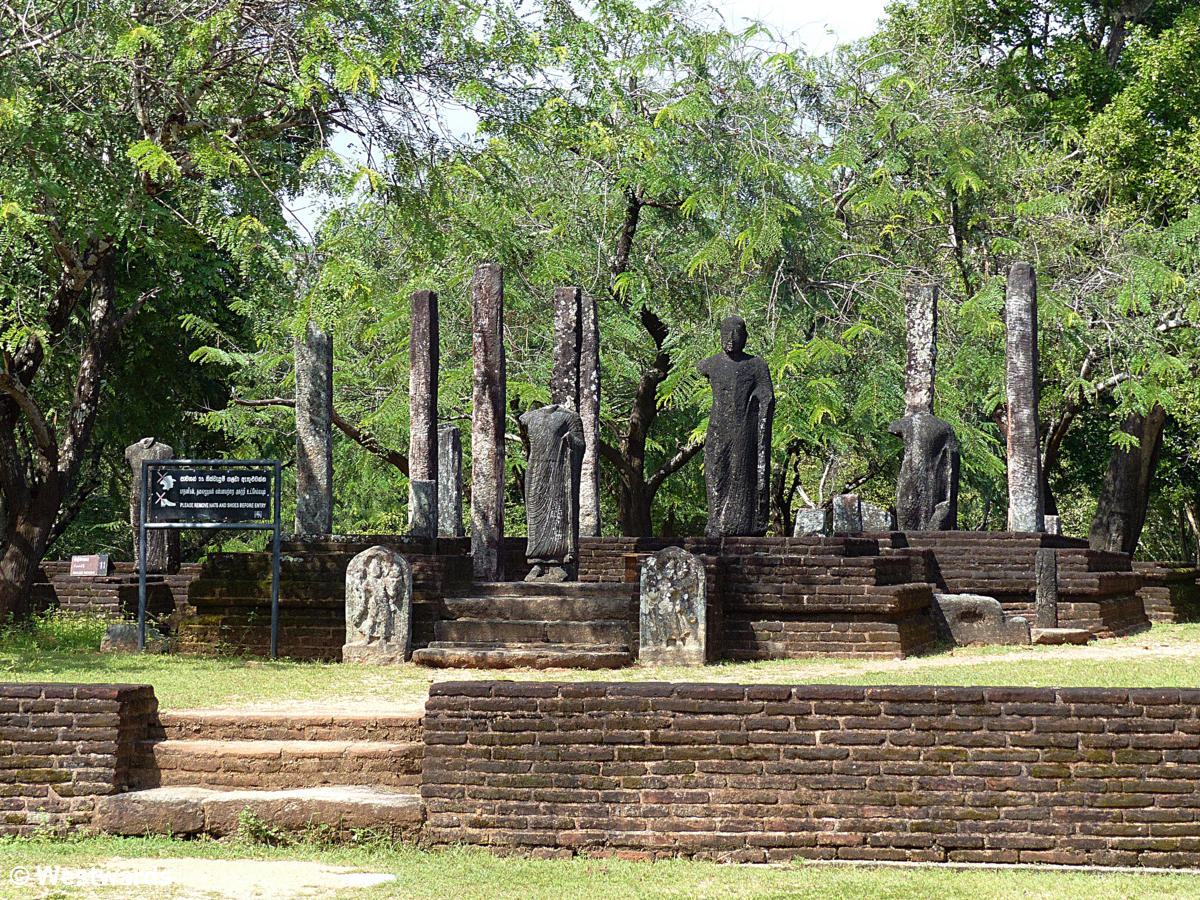
During the 10th century the South Indian Chola rulers invaded Sri Lanka, conquered the Singhalese capital of Anuradhapura and took control over the country. They moved their capital to today’s Polonnaruwa: they thought it safer and easier to defend, and apparently there were less mosquitoes than in Anuradhapura (we could not verify that in our experience).
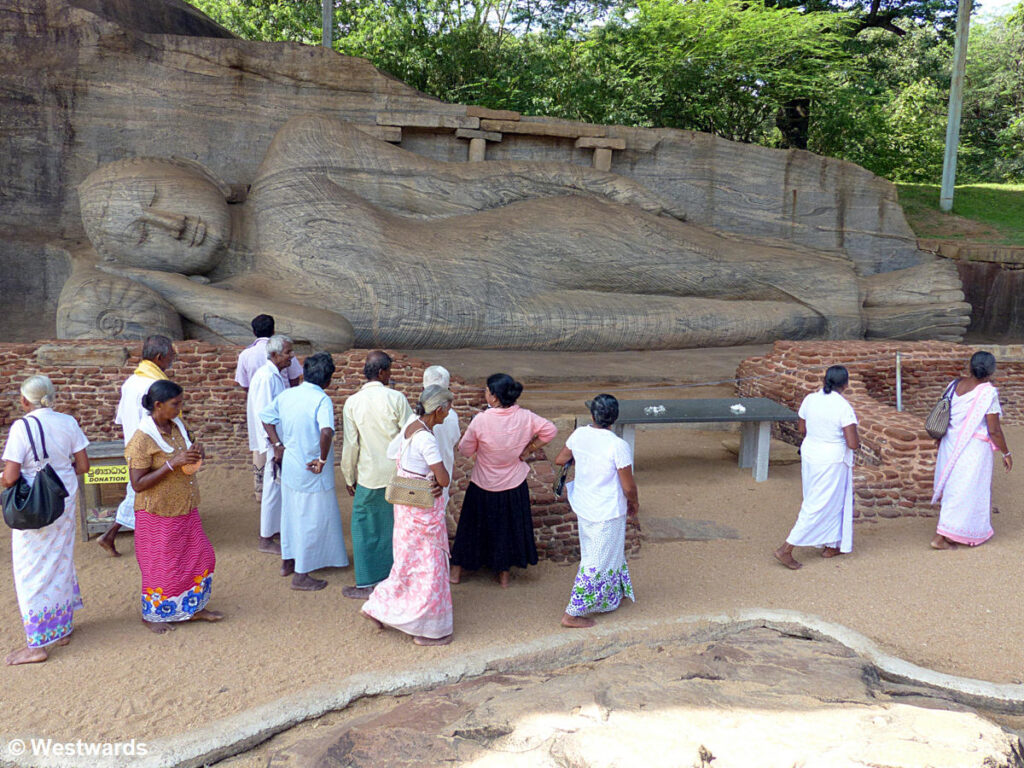
Over a span of a few hundred years the Chola made Polonnaruwa a thriving commercial and religious centre. Today it is just a small tourist village, but the historical ruins have been a UNESCO World Heritage Site since 1982.
Accordingly, Polonnaruwa is a major tourist spot in Sri Lanka: tour groups cruise by bus through the spread-out area, but much nicer and more relaxed is a visit by tuk-tuk or bycicle.
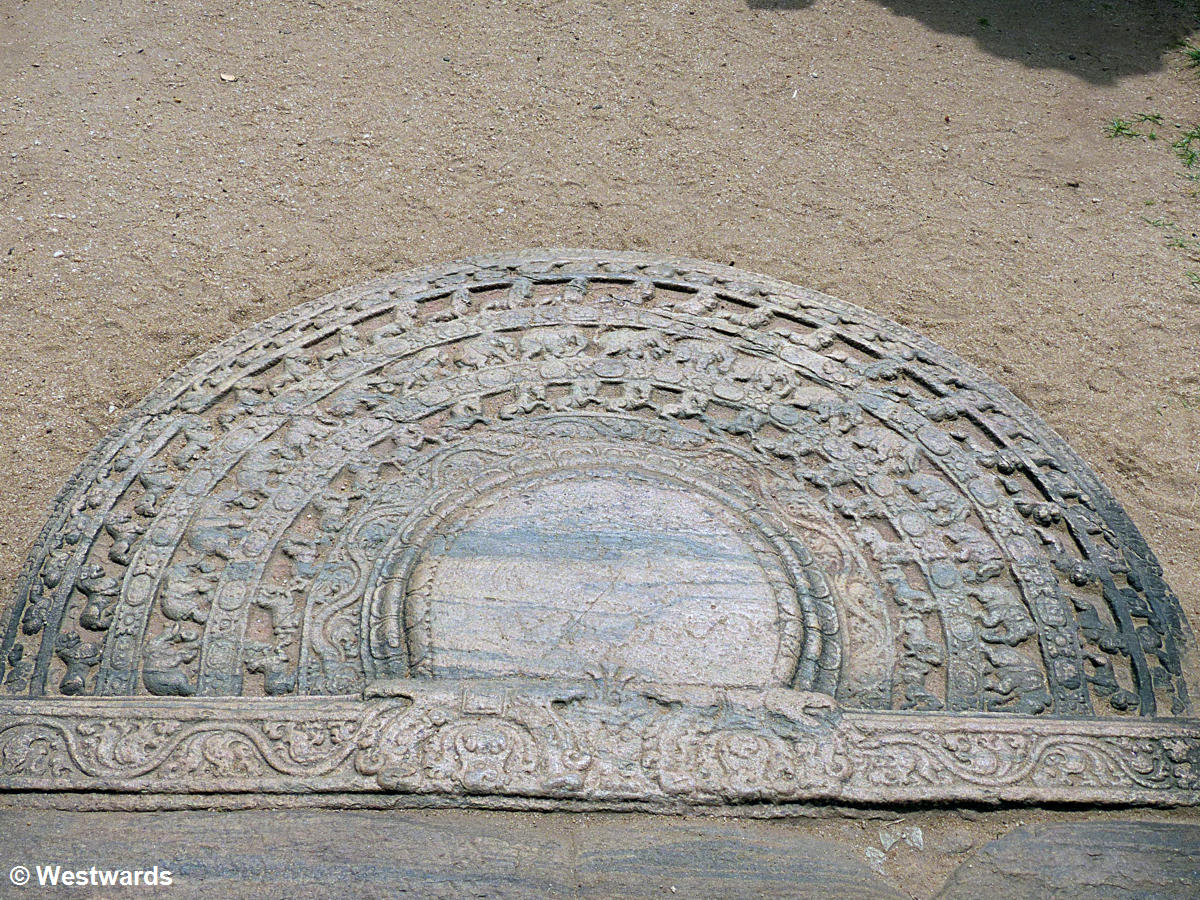
One of the distinctive architectural features of Sri Lanka are the moon-stones (thus called because of their half-moon shape). These eye-catching moonstones are decorated with exquisitely carved animals and were used as a sort of (spiritual) doormat. The four animals – elephant, horse, lion and bull – symbolise the four cardinal directions as well as the four Buddhist periods in life: birth, illness, old age, and death. We found it somewhat sad that illness immidiately follows birth in this concept.
King Nisankamalla
About the first place we visit is the Royal palace of King Nisankamalla right behind the museum.

“King Nisankamalla used the stone lion as a throne,” we read in our guidebook and wonder how he held court there. It doesn’t look comfortable. Did he sit astride on the lion, or did he have to balance on it cross-legged? Nisankamalla, one of the more outstanding of the Polonnaruwa kings, soon becomes our favourite. He had another stone seat that he used specifically to watch sports competitions. As on a number of other personal items, palace walls, and stelae, he had his heroic deeds inscribed on this seat, just in case someone forgot about his benevolence and his fearless exploits.
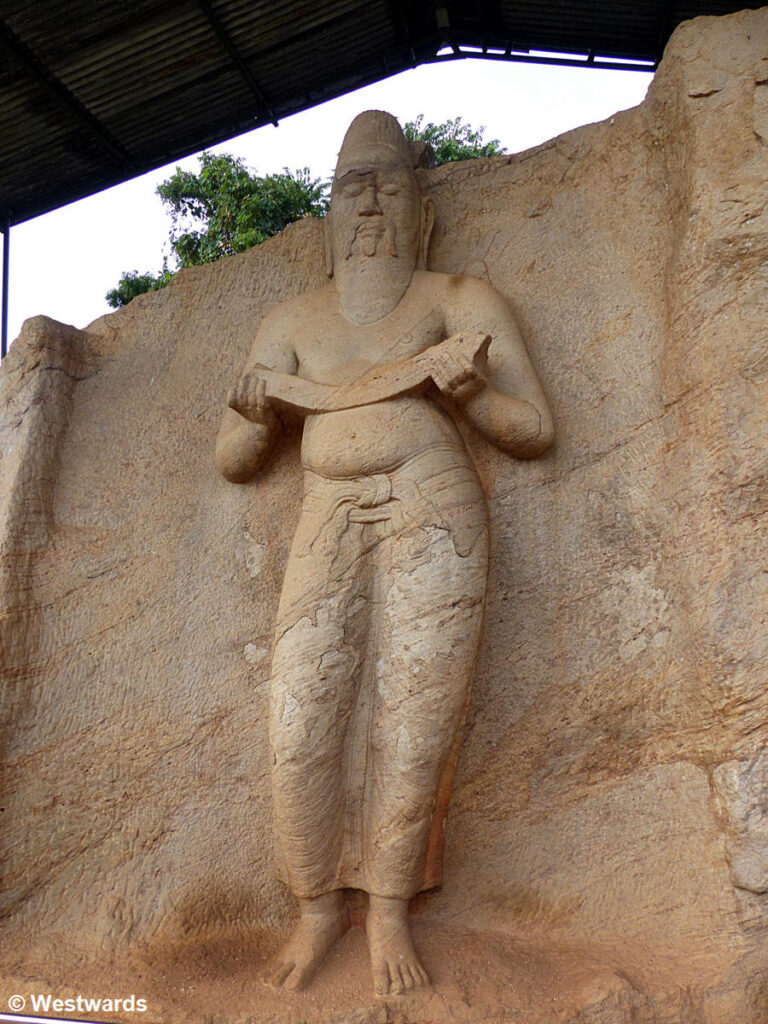
He also never failed to mention in these public notices that his dynasty was quite obviously the only one capable to rule the country.
A tourist holding a melon slice?
In the evening we cycle along the artificial water reservoir to another outlying site in the south, the Potgul Vihara. There are remains of a building which may have been a library, according to speculations by archaeologists.
They suspect this from a nearby 4 m human stone figure, probably a Vedic teacher holding a book (made out of palm leafs back then). To us he looks like a tourist wearing glasses and a fancy hat, starring sceptically at the giant melon slice in his hands.
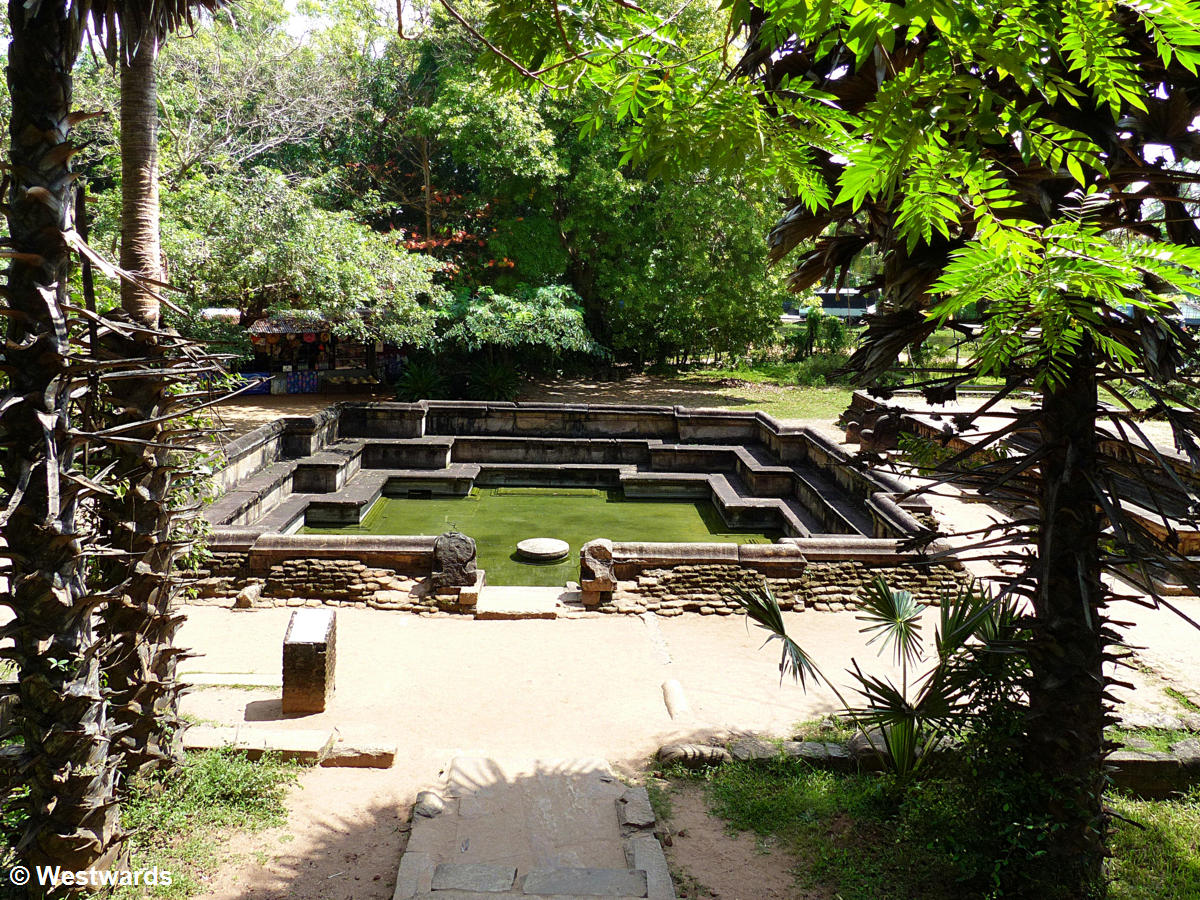
Is Polonnaruwa worth visiting?
In comparison to Anuradhapura the archaeological site of Polonnaruwa is newer and therefore better preserved. Due to its location there are also more tour groups, but nevertheless we thoroughly enjoyed our cycling day out.
How to get around
The ancient city of Polonnaruwa lies on the outskirts of the village of Polonnaruwa. The best way to get there and around is by bicycle. Most guesthouses rent them for 1-2 Euro per day.



